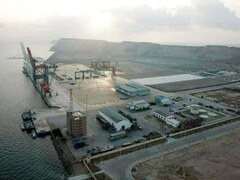US oil prices struck new 13-year highs above $40 a barrel on Wednesday as the market remained concerned over tight supplies, despite a call by the world's biggest exporter for Opec to raise output next month.
US light crude climbed to a peak at $40.38 a barrel, less than $1 off the all-time high for New York crude futures at $41.15, reached in October 1990 after Iraq invaded Kuwait.
US crude was up 20 cents at $40.26 a barrel.
Oil has ridden a roller-coaster this week, dropping $1 on Monday when Saudi Arabia proposed that the Opec producers' cartel raise output limits by 1.5 million barrels a day (bpd) to cool down red-hot prices, which have surged 20 percent this year.
The kingdom proposed the increase be adopted at the scheduled June 3 Opec ministers' meeting in Beirut.
But the market bounced back to highs not seen since just before the first Gulf War on doubts that the Opec increase would tip the supply-demand balance in an already constricted market.
The Organisation of the Petroleum Exporting Countries has been pumping 1.5 million to 2.0 million bpd above its official production ceiling of 23.5 million bpd since it agreed to cut supply by one million bpd from April 1.
But David Thurtell, commodities strategist at Commonwealth Bank of Australia in Sydney, said Saudi Arabia was likely to ensure that more barrels hit the market after June. "Opec members will overproduce on the new quota.
There will be a similar level of overproduction, say 1.5 million bpd, on top of the higher production ceiling, which will be at 25 million," Thurtell said.
"Opec knows that all high oil prices do is damage economies and asset markets, and with them the demand for oil, while encouraging development of competing oil resources. The market should come to its senses soon and will come down in the next couple of months," he said.
Opec President Purnomo Yusgiantoro said on Tuesday he was consulting other Opec members about the Saudi proposal, which is likely to find backing from Kuwait and the United Arab Emirates, which both opposed the April cut to output limits.
Iran at the weekend said it would not go against any proposal to raise production at the June meeting.
US prices have stayed stubbornly high this year, averaging $35.94 a barrel so far, 16 percent above the average 2003 price, on worries of a supply crunch in the United States, surging Chinese demand and fears of disruptions to oil flows from the volatile Middle East, home to two-thirds of global reserves.
Iraqi crude exports have been cut by about 500,000 bpd since the weekend bombing of a pipeline running to its key Basra oil export terminal.
Officials said on Tuesday exports should return to 1.6 million bpd within 24 hours, but the attack came just two weeks after failed attempts to bomb the terminal and was a sharp reminder of security risks at oil infrastructure in the region.
The US Energy Information Administration (EIA) is due to release its weekly report later on Wednesday on US fuel stocks and traders will focus on gasoline inventories to see whether supplies are rising sufficiently for the upcoming summer months when demand hits a peak.
Ten analysts surveyed by Reuters forecast that US gasoline stocks would show a rise of 1.6 million barrels in the week to May 7, and crude stocks would grow by 1.4 million barrels.
BR100
7,874
Increased By
36.2 (0.46%)
BR30
25,599
Increased By
139.8 (0.55%)
KSE100
75,336
Increased By
405.6 (0.54%)
KSE30
24,215
Increased By
69.3 (0.29%)





















Comments
Comments are closed.